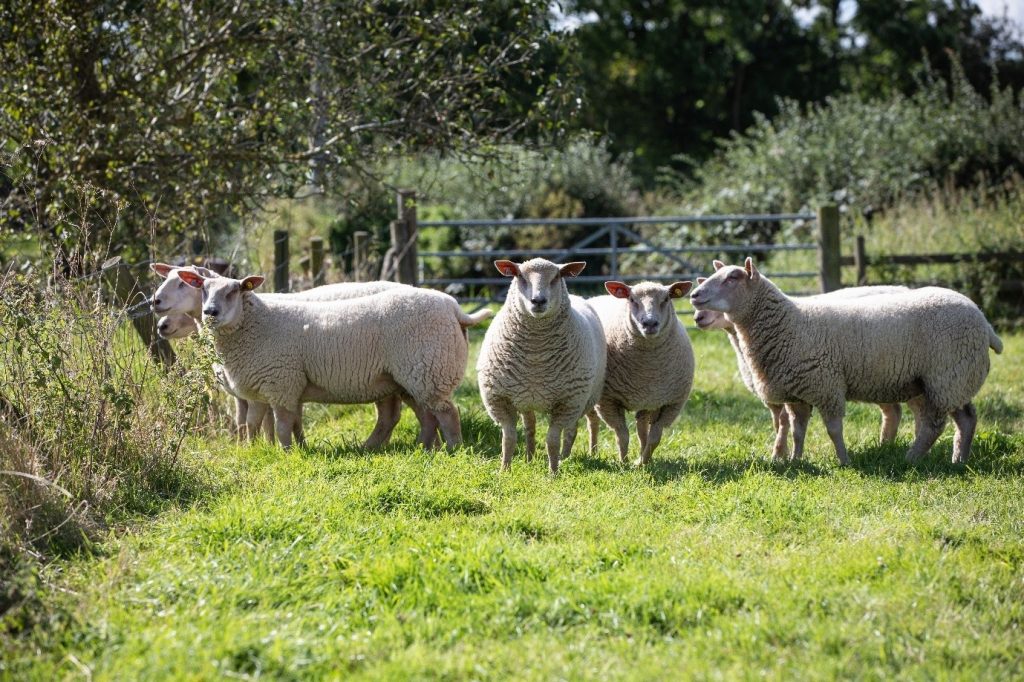Copper is a trace element required in relatively high levels by enzymes involved in immunity, reproduction, growth, bone development, blood circulation, intestinal function, and fleece quality. When it comes to sheep copper supplementation, it is critical to note that copper toxicity can be as detrimental as copper deficiency. Copper deficiency or toxicity is also near-impossible to fully come back from, so prevention is key.
Understand sheep copper deficiency
A copper deficiency can occur as primary, secondary, or a combination of both.
Sheep will face a primary deficiency when copper in the diet is insufficient; commonly on sandy and free-draining soils when rainfall is high. They will face a secondary deficiency when antagonists – such as sulfur, molybdenum and/or iron – bind with the dietary copper. Sheep typically ingest antagonists when they graze on grass or forage contaminated with soil or when their diet is high in protein.
Deficiency symptoms occur when copper levels in the blood fall below 14 µmol/L, and include:
- Swayback / lambs unable to stand (where ewes where deficient mid-pregnancy)
- Fractures of the long bones and rib bones in lambs
- Irreversible poor fleece/steely wool in growing lambs
- Poor growth, anaemia, and increased susceptibility to bacterial infections
- Loss of pigmentation in black-woolled sheep
- Death
Blood plasma levels of below 9.4 µmol/L in adult ewes and 3 µmol/L in lambs indicates depleting reserves of copper in the liver.
After treating a deficiency, compensatory growth is rarely achieved and swayback recovery is often very limited. Prevention through diet and supplementation is, therefore, key.
Feeds with high concentrations of available copper include:
- Forage grown from large quantities of pig or poultry manure
- Forage grown from soil that is high in lime
- Distillery by-product feeds, such as brewers grains
- Concentrate feeds containing palm oil or molasses sugar beet pulp
- Some mineral licks or feed licks
- Copper sulphate foot baths
- Fungicide-treated timber
Recognise copper toxicity risks
Copper is one of the most frequently diagnosed poisonings in sheep. Chronic copper toxicity is more commonly reported following a long-term oversupply within the diet, with dietary copper accumulating in the liver. Clinical signs of copper poisoning include:
- Sudden and increasing weakness
- Aimless wondering or head-pressing
- Shallow and rapid breathing (through anaemia)
- Black urine (through red cell breakdown)
- Yellow skin, gums, eyeballs and the third eyelid (through jaundice)
- Death
Visit the NADIS site for images
There is variation in breed susceptibility to copper toxicity related to ability to absorb dietary copper. Flocks more susceptible to copper toxicity include:
- Texel breeds
- Suffolk breeds
- North Ronaldsay breeds
- Some continental short-wool breeds
- Intensively housed sheep
- Growing lambs (compared to adult ewes)
Toxicity typically results when there is more than one method of copper supplementation on top of feeds with high copper content.
Because conditions affecting trace element levels and their absorption can vary on farms from year to year, veterinarians or farm managers should regularly and proactively collect blood samples to establish a correct copper supplementation plan.
How to achieve correct supplementation
You should never supplement unless a copper deficiency is known to exist or be a risk. With that, it is important to establish all the existing sources of copper in the diet. Total recommended levels are around the 10-17mg of copper per kilogram of dry matter; depending on sheep breed and other dietary factors. Once this is known, you know how much supplementation – if any – is required.
When choosing your supplementary copper solution, the most important thing to look out for is ensuring the supplement is copper oxide, NOT elemental copper. Copper oxide is available to ruminants, whereas elemental copper is not.
Tracesure Sheep With Copper supplies copper oxide known to reliably maintain adequate levels for 6-months. The boluses are manufactured under strict quality parameters. Note that no other form of copper supplementation should be given immediately prior to or 6 months after administration of the sheep copper bolus/capsules.


